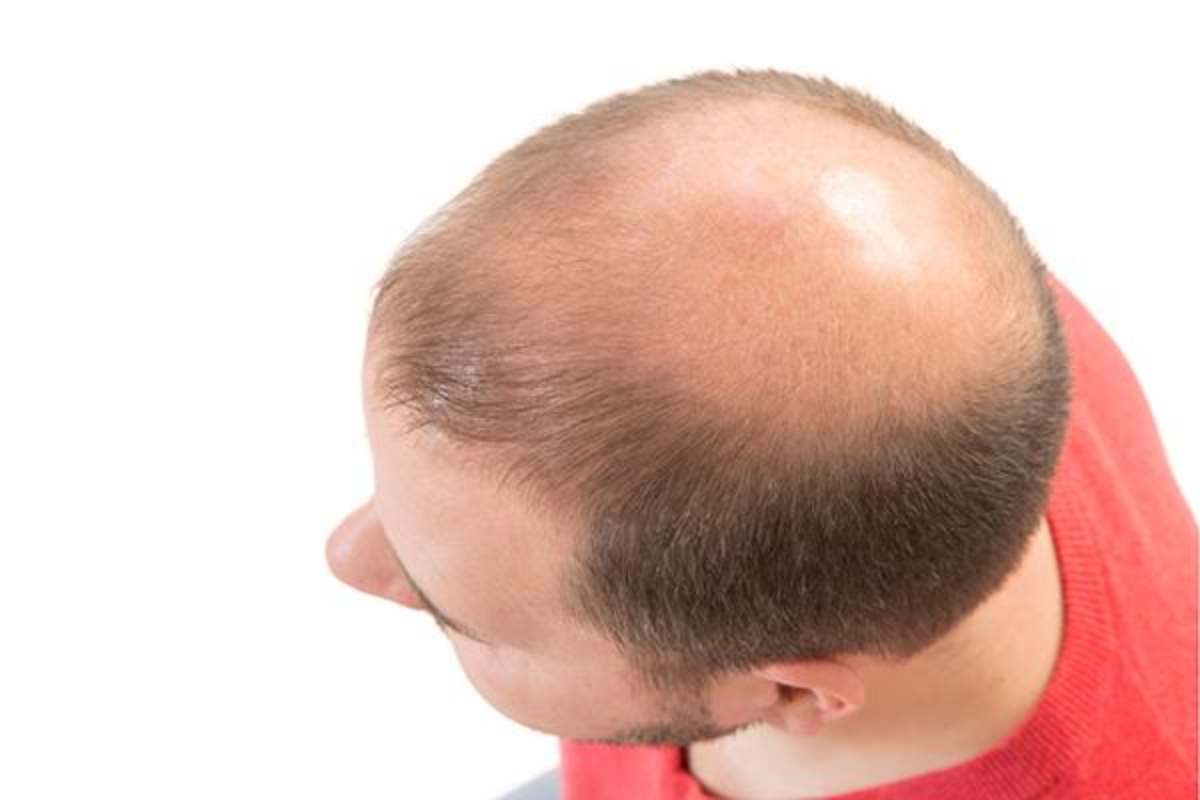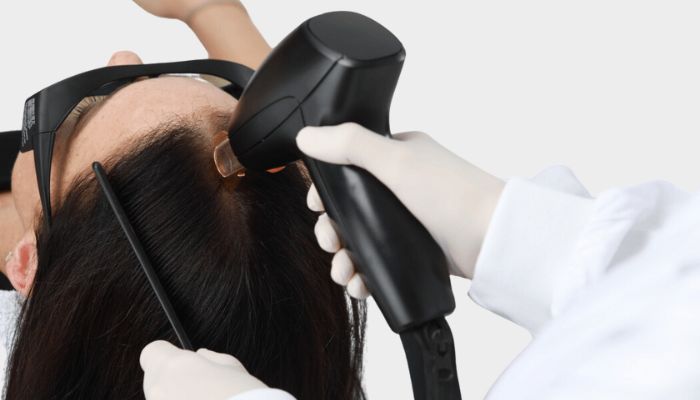Minoxidil is an FDA-approved drug for the treatment of androgenetic alopecia (hair loss). Prior to it being approved by the FDA for hair loss treatment, it was used as an oral pill to treat patients with high blood pressure. A common side effect of oral minoxidil is “hirsuitism” or increase hair growth on the body, face and scalp. In addition to increased (unwanted) body hair, in pill form, minoxidil has other side effects that made it impractical as an oral hair loss treatment.
In the 1980’s, the scientists at the UpJohn Corporation invented a topical formulation of minoxidil in a 2% and 5% strength, called Rogaine. When applied to the scalp it harnessed the benefit of hair growth in areas of balding while avoided the unwanted side effects that came with the pill form.
Who Should Use Minoxidil?
Minoxidil topical solution can be used by adults over 18 years old who are experiencing gradually thinning hair. People who have vertex/crown hair loss tend to respond best to the treatment, but it is effective throughout the scalp.
There are 2% and 5% formulations of the drug available for both men and women which both come in liquid solution or foam. There are also over-the-counter versions of both formulas except for the 5% strength for women, which is still under patent as it was not released until much later than the original 2%. There is really no difference between the men’s, women’s or the over-the-counter versions except the price or color of the boxes. We recommend all patients use the 5% strength and decide if they prefer the foam or solution.
How Does Minoxidil Work?
Minoxidil topical solution is intended for external use only. It is to be applied to a dry scalp per the instructions from your doctor. Once applied, it should be left on your head until it dries by itself – do not use a hairdryer in an attempt to speed up the process.
Science does not currently understand exactly how minoxidil works. It is known that unlike Propecia, minoxidil does not affect the levels of DHT. Some scientists believe that minoxidil works in part by having a vasodilatory effect upon the blood vessels. The dilation could allow for improved oxygen, blood, and nutrient flows to the hair follicles. What we do know is that it is activated in the scalp by an enzyme called sulfotransferase which is found in hair follicles. When activated it shortens the telogen (shedding) phase and prolongs the anagen (growth) phase therefore causing the miniaturized hair follicles to grow longer and stronger.
How Soon Before Results Start Showing?
Many people start seeing benefits after 4 months of using minoxidil. However, the full benefit usually isn’t realized until 12-14 months after starting treatment.
Minoxidil must be used on a continual basis in order to maintain hair growth. If you stop using minoxidil, you might experience “catch-up hair loss” in which you will start to lose hair at an accelerated rate until they catch-up with the level of hair loss that you would have had, had you never used minoxidil in the first place.
Who Shouldn’t use Minoxidil?
It was originally created to help people with high blood pressure. Therefore, if you suffer from low blood pressure, you should avoid using minoxidil unless directed by your doctor. Pregnant women and people with heart problems should also avoid using the drug.
People who have experienced hypersensitivity with the other components of minoxidil should avoid using it as well. Speak with your doctor if you have any questions regarding the drug or the ingredients.
Minoxiidil will not regrow hair in areas of scarring hair loss. If you have experienced trauma or deep burns in your scalp, you should let your doctor know. People who have hair loss from hair grooming methods as cornrows or tight ponytails should also consult with their doctor because minoxidil may not be helpful.
Are there Any Side Effects of Minoxidil?
Topical minoxidil is considered safe for long-term usage to treat androgenetic alopecia. However, if you start to notice any side effects such as burning, redness, itching, or irritation, you should inform your doctor and discontinue its use.
Unwanted hair growth can occur in areas adjacent to where it is being applied. It’s also suggested that you wash your hands completely after touching the medication. If topical minoxidil comes into contact with other areas of skin on your body, unwanted hair growth can occur.
Many people use minoxidil or finasteride before they undergo a hair transplant to help improve the native hair. Recent studies have shown that using a combination of both works best in treating male androgenetic alopecia. Your doctor may suggest that you take minoxidil at the same time you take finasteride.
What is the Success Rate of Minoxidil?
Researchers conducted a 1-year study of 984 men who had male-pattern hair loss and were using minoxidil 5%. At the end of the study they found that the hair loss areas in the scalp had become smaller in 62% of the study participants. Hair loss remained unchanged in 35.1% of the participants and grew larger in 2.9% of them.
Each person reacts differently to minoxidil and results will vary from person to person. Normal hair usually only grows ¼ – ½” per month so it will take at least 4 months before you start to notice hair regrowth.
Hair Loss Clinic in San Antonio
Minoxidil is a great drug that can help slow or reverse hair loss. It should be noted that it is only a treatment for hair loss – not a cure. It will be need to be used indefinitely as long as you wish to benefit from the use. If you are looking for a more long-term solution to augment medical therapy, you should ask your doctor about a hair transplant.
Contact the Limmer Hair Transplant Center to schedule an appointment with our expert hair transplant surgeon, Dr. Jennifer Krejci MD. She will sit down with you and explain the options available to help slow, or even stop, the hair loss you’re experiencing.







